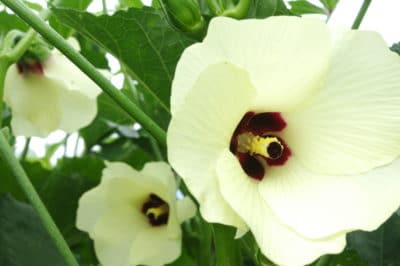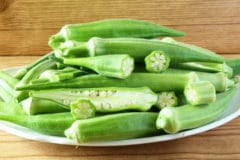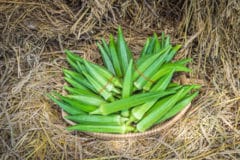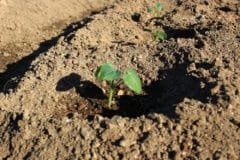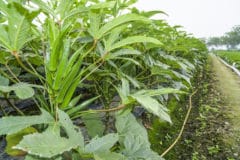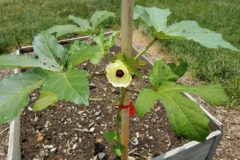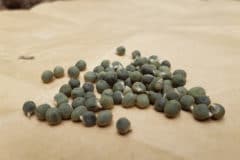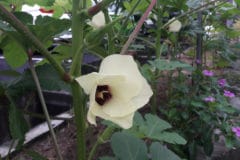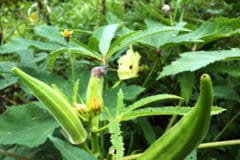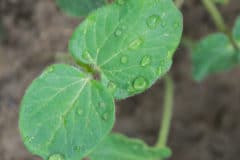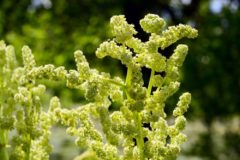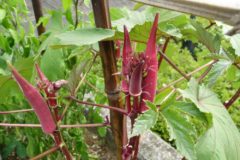When to Harvest Okra Flowers
Okra flowers begin to appear 50 to 60 days after you plant your okra. Look for them first among the leaves near the bottom of the plant. You won’t have much time to harvest the flowers once they appear because okra is self-pollinating, and the pods begin to appear within five or six days after the flowers appear.
Remember, though, that every flower that you harvest means one less pod you will have to harvest later, so don’t pick them all. You might even want to save some of the pods so that you can harvest the seeds and try them later in the growing season.
How to Harvest Okra Flowers
You can harvest okra flowers in two ways, depending on how you want to store them.
You can use a knife or pruning shears to cut the stem just as if you were gathering them to put them in a vase if you want to store your flowers on the stem.
If you want to store your flowers in a container, you can harvest them as you would harvest okra pods. Cut the stem just below the cap or the base of the flower leaving just a nub of the stem.
How to Clean Okra Flowers
You can use these steps to clean any edible flower.
- After harvesting the flowers, hold them upside down and shake them to remove any insects.
- Remove the stamen from the center of the flower.
- Gently rinse the flowers in your sink or in a container of water.
- The flowers retain more flavor when they are dried quickly, so dry them outside in direct sunlight.
Storing Okra Flowers
To store your flowers on the stem, place them in a jar, glass, or vase of water in your refrigerator. You can also wrap them in plastic or place them in a tightly sealed container.
If your flowers should wilt before you are ready to use them, you can revive them by placing them in ice water, but only leave them there for a few seconds.
How to Serve Okra Flowers
Okra flowers and leaves contain the same thick mucilage that you find in the pods, but there are ways to reduce it. As with the pods, after you clean them, make sure that the leaves or flowers are completely dry before adding them to a salad or cooking with them.
Cooking the pods or the leaves at a low temperature releases more of the mucilage which helps them to thicken dishes like stews and gumbo. Cooking them at high temperatures or adding them to dishes that contain acidic foods like tomatoes reduces the amount of mucilage that’s release.
Flowers are too delicate to withstand cooking at temperatures that are too high for very long, though. You can, however, use okra flowers as you would squash blossoms or fry them in batter as you would okra pods. You also can stuff them with cheese and bake them.
Tips that reduce the amount of mucilage released by okra pods include grilling, roasting, or sautéing the okra before adding it to your dish; sprinkling the pods with vinegar; or placing the pods to soak for half an hour in 1/2 cup of vinegar for each pound of okra and then allowing it thoroughly dry before adding it to your dish.
You could quickly sauté either the flowers or the leaves before adding them to a dish that requires cooking. The leaves also could be soaked before adding them to a salad, but you might only want to sprinkle the flowers with vinegar and then let them dry before tossing them into a salad or using them as a garnish.
